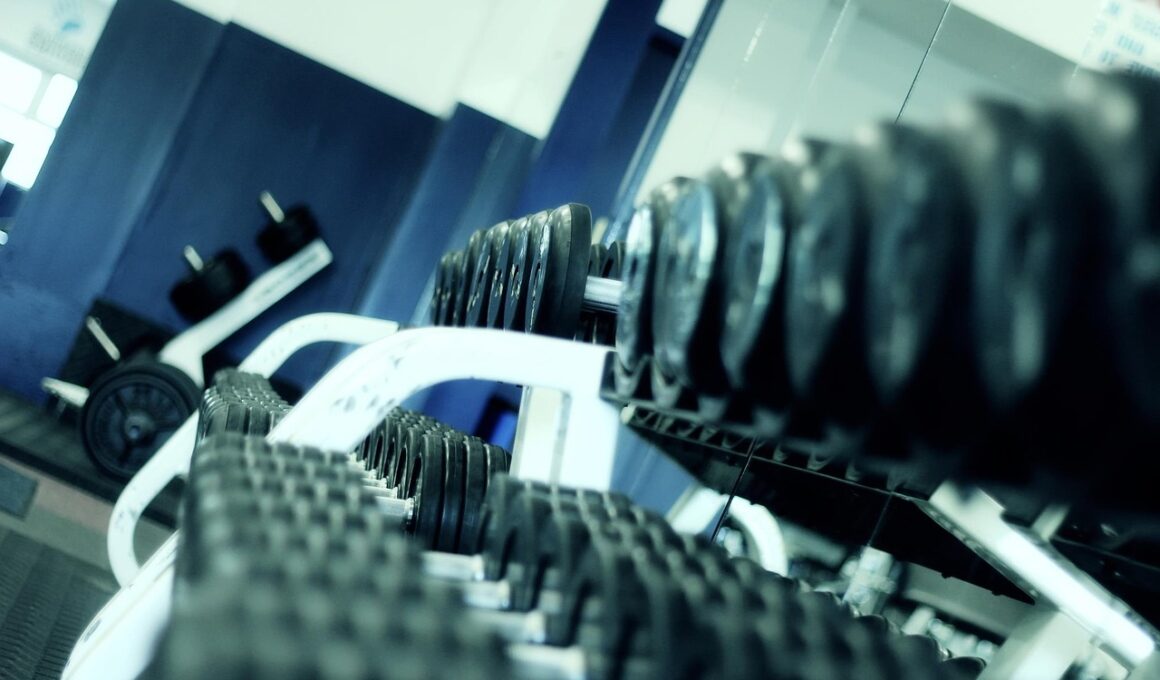The Science Behind Corrective Exercises and Neural Adaptations
Corrective exercise strategies are pivotal for addressing movement deficiencies, improving functional performance, and enhancing overall athletic capability. At the heart of these strategies lies a profound understanding of how the human body adapts both structurally and neurologically in response to targeted interventions. Corrective exercises aim to identify and rectify muscle imbalances and flawed movement patterns. By doing so, they promote better posture, facilitate efficient biomechanics, and ultimately help prevent injuries. Importantly, neural adaptations play a critical role in these processes, as they enable the body to create more effective movement patterns through refined motor learning. The central nervous system (CNS) governs these adaptations, encompassing various networks responsible for coordinating muscle activation and timing. Therefore, when we introduce corrective exercises into a training regimen, we’re not merely strengthening muscles; we are retraining the brain to engage muscles correctly. This interplay between muscle and nerve communication can significantly elevate performance across various activities, from everyday tasks to competitive sports. Understanding these principles allows fitness professionals to develop tailored corrective exercise programs that yield maximal benefits while fostering long-term resilience in clients.
Furthermore, one must appreciate the vital connection between proprioception and corrective exercises. Proprioception refers to the body’s ability to sense its position in space and requires coordination among sensory receptors, the CNS, and the musculoskeletal system. This intricate system enables the body to adjust movements strategically and enhances reaction times to prevent injury. As corrective exercises are employed, proprioceptive training becomes essential as part of holistic strategy. Researchers suggest that including exercises focused on balance and stability can profoundly influence proprioceptive abilities. When corrective exercises include balance-focused movements, it actively engages the sensory systems, fostering improvements in dynamic balance. This has direct implications for athletic performance, particularly in sports demanding rapid changes in direction or complex movements. Examples of effective corrective exercises include single-leg deadlifts or stability ball rollouts which emphasize core engagement. As a result of fine-tuning proprioceptive feedback, athletes experience heightened awareness of their bodily positioning. By incorporating these strategies into training, fitness professionals can systematically enhance not only strength but also overall coordination, agility, and movement efficiency.
The Role of Assessment in Corrective Exercise
Before implementing any corrective exercise, a thorough assessment is necessary to identify specific deficits and movement patterns. Assessment tools, such as functional movement screening (FMS) or overhead squat assessment, provide valuable insights into muscle imbalances and joint limitations. These initial evaluations guide fitness professionals in designing individualized corrective exercise programs that directly address identified issues. Moreover, regular re-assessment allows trainers to track progress and make necessary adjustments to ensure clients continue advancing. The goal of any corrective program is to enhance not just strength but the quality of movement itself. This quality refers to a client’s ability to perform fundamental movements correctly and without compensation. Corrective exercise is not a one-size-fits-all approach; the more tailored the program, the more effective it will be in producing results. By analyzing each client, professionals can engineer focused strategies that lead to better outcomes. Tracking improvements in movement efficiency over time serves as a motivator for clients. It demonstrates the tangible benefits of consistent training efforts and actively reinforces commitment to injury prevention and performance enhancement.
As clients engage in corrective exercise strategies, it is vital to recognize the importance of breathing patterns. Effective breathing not only supports stability and core engagement but also aids in strengthening overall functional fitness. Many individuals unknowingly adopt poor breathing habits that contribute to muscle tension and further exacerbate movement dysfunctions. Thus, integrating breathing techniques into corrective exercise sessions enhances the benefits of these strategies. For example, practicing diaphragmatic breathing can improve oxygen delivery to muscles while promoting relaxation during sessions. Trainers should educate clients on the relationship between controlled breathing, improved performance, and stress reduction. Incorporating proper breathing methods while executing corrective exercises leads to heightened focus and efficiency. Furthermore, as clients learn to synchronize their breath with movement, they also cultivate a greater mind-muscle connection that enhances neuromuscular adaptations. This conscious awareness not only supports the immediate corrective process but also translates into better movement patterns during various activities. Over time, these combined approaches can lead to significant improvements in functional movement, which contribute to enhanced athletic performance and injury prevention.
Creating an Effective Corrective Exercise Program
Designing an effective corrective exercise program involves meticulous selection of exercises that address clients’ specific needs based on their assessments. Exercise selection should integrate both strengthening and flexibility components, as tight or weak muscles often contribute to movement dysfunction. An ideal program would emphasize exercises that improve stability, promote proper alignment, and develop muscular endurance. Moreover, it is essential to educate clients about the importance of maintaining consistency with these exercises. To ensure adherence, trainers should create engaging, varied routines tailored to the client’s preferences and abilities. This helps participants remain motivated. Ensuring that clients understand the rationale behind each chosen exercise is fundamental in fostering compliance. Not only do they learn to appreciate the purpose behind every movement, but they also establish a deeper understanding of the impact on their own bodies. Additionally, trainers should progressively advance exercises by increasing difficulty, volume, or complexity as the client demonstrates improvements. This is key to continuing neural adaptation and ensuring results from their corrective exercise program. The long-term benefits can ultimately translate into sustained athletic performance and overall physical well-being.
Beyond the scope of individual sessions, client education remains a cornerstone of successful corrective exercise strategies. Educating clients about the fundamentals of biomechanics, muscle function, and the benefits of corrective movement patterns ensures they remain informed and involved in their training journey. Empowering clients with knowledge not only demystifies the corrective process but fosters a strong sense of ownership over their fitness. Moreover, regular discussions about their progress, challenges, and experiences cultivate a positive trainer-client relationship that encourages open communication. Clients who feel invested in their programs are more likely to adhere to routine and put forth the necessary effort to achieve their goals. Availability of resources, such as instructional videos or educational articles related to corrective exercises, can further support client learning. Ensuring that clients regularly receive updates or tips enables them to continue applying lessons learned outside of the training environment. Knowledge and involvement remain powerful drivers behind long-term success in any corrective exercise endeavor, allowing for sustained improvements over time and reinforcing their commitment to health.
Conclusion: The Future of Corrective Exercise Strategies
In conclusion, corrective exercise strategies remain vital in promoting optimal health and performance among diverse populations. As the field of functional fitness continues to evolve, the science underpinning corrective exercises and neural adaptations will pave the way for innovative training methodologies. Consequently, fitness professionals will need to remain abreast of the latest research and techniques to enhance program effectiveness. Collaborative efforts between trainers, medical professionals, and researchers could ultimately create comprehensive frameworks for corrective exercise implementation. Achieving a holistic understanding can ensure that all factors impacting movement quality, from physiological to psychological, are considered. Additionally, the importance of digital platforms and technology cannot be overstated. Employing wearables and mobile apps can facilitate data collection to monitor clients’ adherence to their programs. This brings unprecedented insights into their progress, allowing for data-driven decision-making in program adjustments. As the corrective exercise domain continues to advance, professionals will be uniquely positioned to enhance client outcomes and overall performance. The convergence of science, technology, and targeted interventions holds immense potential for fostering agility, adaptability, and resilience in active lifestyles.


